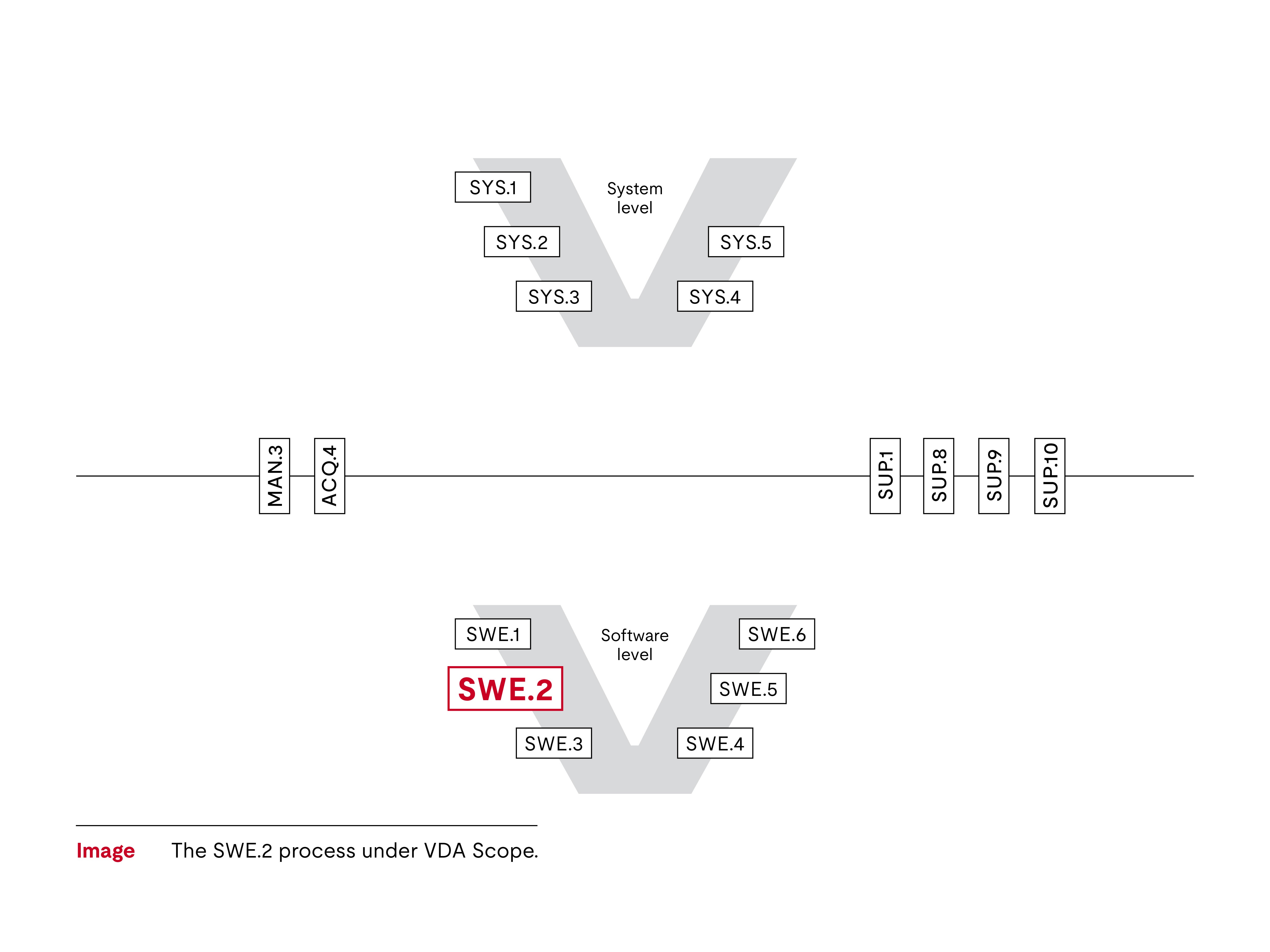
Process ID: SWE.2
Process group: Software Engineering
Automotive SPICE® is a trademark of VDA QMC.
The Software Architectural Design process in Automotive SPICE® (also known as SWE.2) can help your organization structure and document the internal logic of a software product.
With software architecture, the expectation is that an organization has already established software requirements, which describe the purpose of the software. Software architecture helps define how the functionality documented in the software requirements will be implemented. In short, the requirements describe what is intended while the architecture describes how that will be possible.
Many organizations and projects face challenges in understanding how to document the architecture and which elements are required. To help add clarity, we will explore these three important aspects of software architecture in greater detail:
- Appropriate view
- Interfaces
- Traceability

An appropriate view of software architecture
Often, architecture is comprised of a physical representation, such as a block diagram of the software only. However, that approach is not adequate for complex projects. A hierarchical breakdown of the software, which demonstrates and explains how functionality and non-functional requirements will be implemented in the different components and subcomponents, offers greater value.
Beyond a physical representation, other potential views include:
- Dynamic views.
- Specific functional views that detail a specific feature.
- State-flow diagrams.
- Interfaces.
Typically, as system complexity increases, the number of different views required also increases. As these views must be kept consistent, an appropriate UML or SysML tool should be used to support consistency checks.
Detailed Interface descriptions in software architecture
A pitfall often encountered in assessments is the lack of detailed interface descriptions. The expected content of interface documentation covers multiple aspects, including:
- Name
- Type
- Unit
- Resolution
- Range
- Default-value
Without this information, a proper testing of the interfaces in the integration test is impossible, but describing these interfaces in an appropriate UML or SysML tool supports consistency between the different views.
Supplementing the definition in System Requirements Analysis (SYS.2), software-specific interfaces between the software components are considered here in terms of inter-process communication (IPC) mechanisms and bus communication mechanisms.
Establish traceability between software architecture and requirements
This process also requires traceability between software architecture and software requirements. Typically, a tool break between the requirements and the architecture complicates traceability.
The purpose of traceability is to:
- Support consistency checks, including checking the completeness and accuracy of the coverage of software requirements.
- Support the impact assessment in case of change requests or bugs.
- Ease the report of stakeholder expectations and identify whether the requirements have been implemented in the architecture.
Why choose UL Solutions Software Intensive Systems for Automotive SPICE® support?
We can support automotive original equipment manufacturers (OEMs) and suppliers in:
- Achieving the required capability levels within key development processes.
- Systematically improving existing workflows and methods.
- Evaluating the status of process improvements through formal assessments and gap analysis.
- Fulfilling the requirements of Automotive SPICE® in harmony with security, functional safety and agile methods.
- Training staff and assessors.
Learn more about the Automotive SPICE® for Machine Learning Engineering
To further your understanding of the Automotive SPICE® Software Architectural Design (SWE.2) process, watch our video.
Get connected with our team
Thanks for your interest in our products and services. Let's collect some information so we can connect you with the right person.
